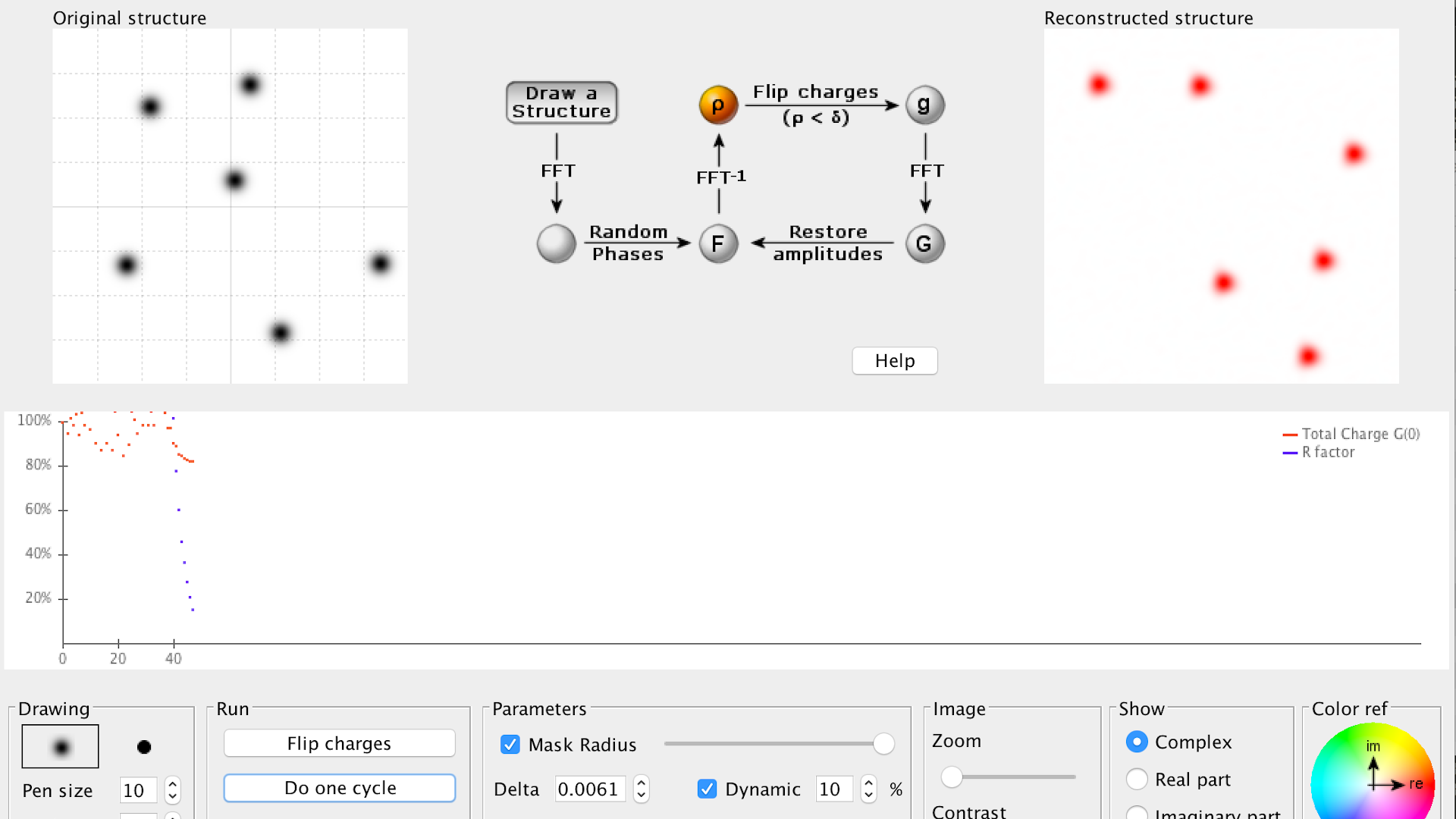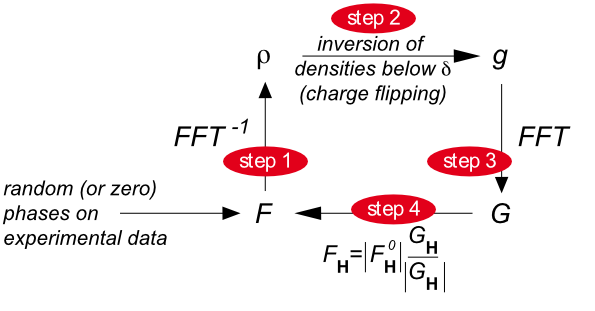The charge flipping algorithm
Nicolas Schoeni and Gervais Chapuis
École Polytechnique Fédérale de Lausanne, Switzerland

This algorithm was proposed by G. Oszlanyi & A. Süto, (Oszlanyi & Süto, Acta Cryst. 2004, 2005). This algorithm does not requires any a priori information other than the diffracted intensities. It consists of four steps indicated in the figure below:
- Calculate the inverse Fourier transform of the structure factors. The resulting electron density ρ(x) has positive and negative peaks due to the wrong phases.
- The negative peaks (up to a small limit δ) are set positive (charge flipping) and a new electron density function is established.
- The Fourier transform of this new density is calculated.
- The phases of the new structure factors are kept but the amplitudes of the structure factors are replaced by the experimental ones.
This procedure continues in a loop with step 1 to 4 until a converging solution is found. The final result should indicate the proper electron density of the structure based on the experimental structure amplitudes.
Note that during this process, the origin of the unit cell is arbitrary. It is up to the user to find the proper origin by rotating the final model by 180° followed by a translation.
In some cases, The user might have to play with different parameters to solve the structure.
